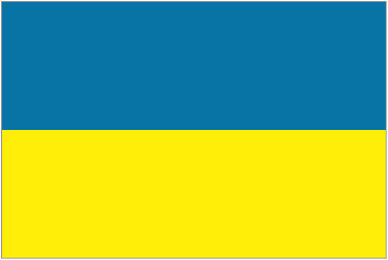January 22

Reunion Day is a rare holiday in Ukraine in that it marks neither tragedy nor defeat nor bloodshed.
On this day in 1919, West Ukraine joined Greater Ukraine. The two republics signed the Act Zluky to form an independent united Ukraine. The triumphant ceremony took place at St. Sophia Square in Kiev.

The joy was short lived.
Later that year Bolsheviks gained control of the country and declared Ukraine a part of the Federation of Soviet Republics. Thousands of Ukrainians died in the fighting.
But that was nothing compared to the number of those who would perish during the horrifying Holomodor.
The Holomodor, literally “plague of famine,” was one of the most gruesome chapters in European history.
The Five-Year Plan
Soviet dictator Joseph Stalin implemented the Soviet Union’s first Five-Year Plan in 1928 to boost national productivity. Nationalization appeared to work in the industrial sector as millions of workers flocked to urban areas to work. Agricultural was another matter.
Stalin failed to foresee (or simply didn’t care about) the demoralizing effect of collectivization on small peasant-owned farms, and he underestimated farmers’ attachment to the land. Collectivization resulted in lower yields and in some cases rebellion. Due to low yields, the Soviet government punished the farm workers by seizing the crops they reaped in order to feed the cities and other parts of the Union. Nowhere was this practice more brutal and devastating than in Ukraine.
The Holomodor
Blaming Ukraine for the failure of the plan, Stalin attempted to force the republic into submission by instituting the world’s most vicious man-made famine.
“When the snow melted true starvation began. People had swollen faces and legs and stomachs. They could not contain their urine…And now they ate anything at all. They caught mice, rats, sparrows, ants, earthworms. They ground up bones into flour, and did the same thing with leather and shoe soles; they cut up old skins and furs to make noodles of a kind and they cooked glue. And when the grass came up, they began to dig up the roots and ate the leaves and the buds, they used everything there was; dandelions, and burdocks and bluebells and willowroot, and sedums and nettles…”
— Vasily Grossman
It’s hard to imagine a death more cruel than slow murder by starvation. And to watch powerlessly as one’s village, family, and children wither up over the course of several months or a year.
Between 1931 and 1932 the Holomodor killed an estimated 7 million Ukrainians.
The famines of the Ukraine led to mass emigration to other parts of the globe, notably Canada and the United States.
After World War II, the Soviet Union consistently denied the extent of the Ukrainian Genocide.
Ukrainian Independence
On January 22,1990, still under Soviet power, Ukraine celebrated the anniversary of its short-lived 1919 independence publicly and proudly for the first time. On that day a human chain of 300,000 people stretched from Kiev to Lviv.
The show of solidarity reinvigorated Ukrainian nationalism. Ukraine declared its independence in 1991.
To this day Russia has not recognized the Ukrainian Genocide. So when Russia and the Ukraine battle over gas lines, it’s about more than gas.
“There were blockades along all the highways, where militia, NKVD men, troops were stationed; the starving people were not to be allowed into the cities. Guards surrounded all the railroad stations. There were guards at even the tiniest of whistle stops. No bread for you, breadwinners!
Death from starvation mowed down the village. First the children, then the old people, then those of middle age. At first they dug graves and buried them, and then as things got worse they stopped. Dead people lay there in the yards, and in the end they remained in their huts. Things fell silent. The whole village died. Who died last I do not know…
Before they had completely lost their strength, the peasants went on foot across country to the railroad. Not to the stations where the guards kept them away, but to the tracks. And when the Kyiv-Odesa express came past, they would just kneel there and cry: “Bread, bread!” They would lift up their horrible starving children for people to see. And sometimes people would throw them pieces of bread and other scraps. The train would thunder on past, and the dust would settle down, and the whole village would be there crawling along the tracks, looking for crusts. But an order was issued that whenever trains were travelling through the famine provinces the guards were to shut the windows and pull down the curtains.
Vasily Grossman, Forever Flowing

Holomodor is a sad stain on Europe’s recent history and although this genocide hasn’t been shown to the whole world yet, someday these dark events will be more than just a forgotten page in that forbidden book at the corner.